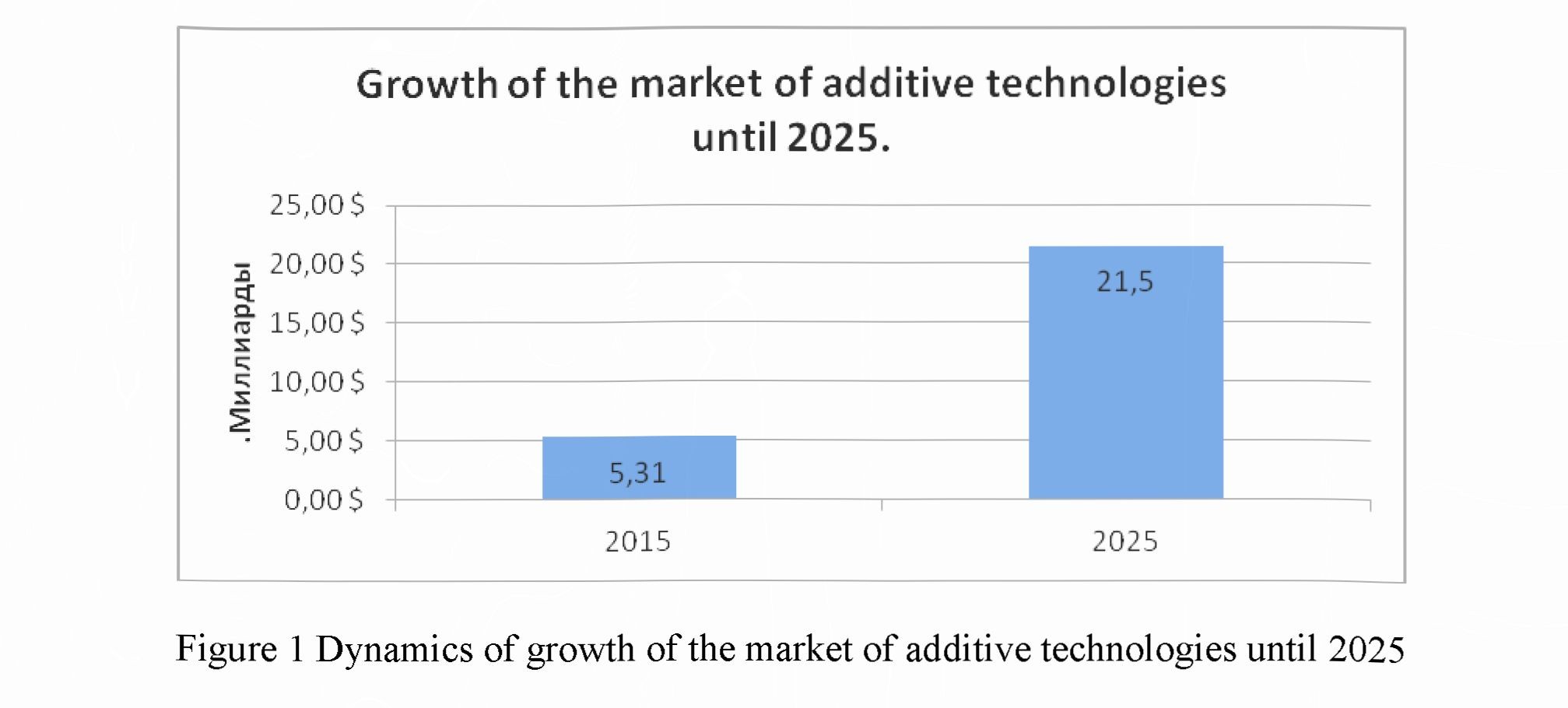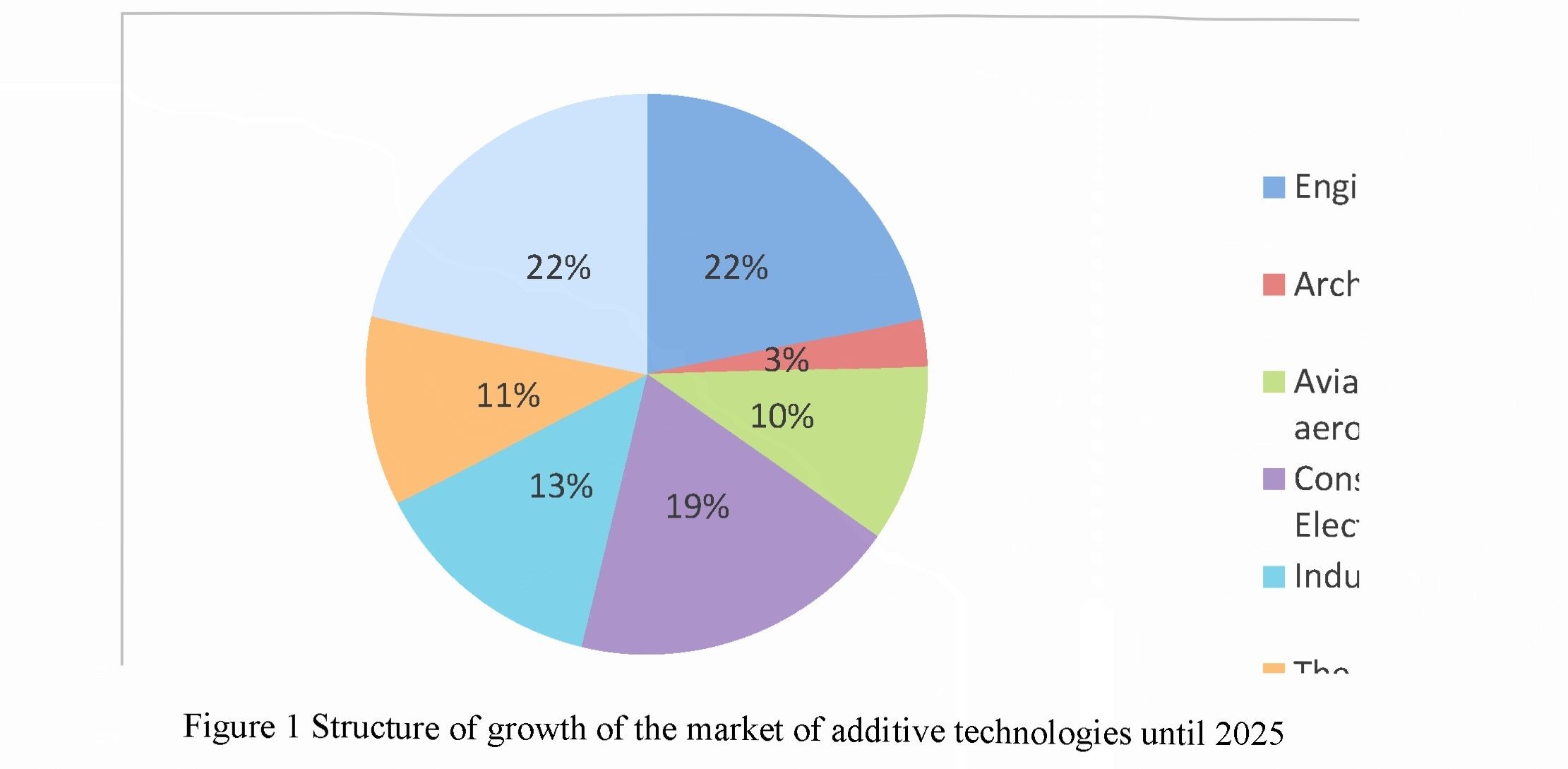Annotation
The article presents the topic of additive production and the prospect of its development in the territory of the Republic of Kazakhstan. The importance of this area is a promising and innovative. The foundations of a theoretical study on the possibilities of introducing this production are proposed. The results of a study about our country', which is lagging behind in the development and application of AP technology', which revealed specific factors influencing its development are presented, and mechanisms for introducing this production based on theoretical studies and analysis aimed at improving the future competitiveness of the economy which are proposed. Dissociative classification of additive technologies. The classification of the basis of the basis of the source material and the principle of its application is based on the basic priznes. The Republic OfKazakhstan is a market for additive technologies. Appreciative Appraisal of Applied Teclmiques in the Republic OfKaazakhstan. The idea is based on the base of the North-Kazakhstan state university' of M. Kozybaeva on the training of specialists in the field of additive technologies.
Introduction
As it is known, the modem pace of industrial development requires such production technologies that minimize costs and are carried out as soon as possible. Along with new and advanced technologies, it is impossible not to notice the rapid growth in the introduction of additive technologies. These technologies are previously unknown production processes, in which the principle of product design is completely different from traditional technologies, in turn, which are based on the method of removing excess material. The use of additive technologies implies the construction of a part by adding layer by layer until the finished product is obtained using a digital 3D model [1-2].
The classification of additive technologies presented in several printing methods is shown below. A distinctive feature of each method lies in the use of the source material and the principle of its application (Table 1).
At the moment there is no area in which additive technologies would not have found applications forthemselves: engineering, medicine, aviation, power engineering and electrical engineering [3-4].
Table 1 Classification of AT depending on the material and its condition
|
Material's condition |
Materials |
Process |
|
Liquid |
Polymers |
Jet print |
|
Stereolithogaphy |
||
|
Manufacturing layered surfacing objects |
||
|
Powdery |
Polymers, metals, ceramics |
3D-print Selective laser sintering Direct laser sintering |
|
Selective laser melting |
|
Solid |
Metals |
Electron- beam melting Metals' direct drawing Exact laser formation |
|
Polymers, metals, ceramics and compositional materials |
Arbitrary extrusion molding Layered production of objects from sheet material |
Authors: O.N. Goncharova, Yu.M. Berezhnoy, E.N. Bessarabov, E.A. Kadamov, T M. Gainutdinov, E.M. Nagopetian, V.M. Covina
American consulting company Frost & Sullivan, based on a study of the analysis of the market of additive technologies, made a statement about the annual growth rate of the global market of additive technologies. These figures has reached 15%. While maintaining the growth rate at this level, the company predicts an increase in the market volume from $ 5.31 billion in 2015 to $ 21.5 billion in Fig. 1 in 2025. According to analysis, in the coming years, the automotive industry will account for 50% of the market, aviation industry and health care. The industries in which technologies of additive production will be used in 2025 are shown in Figure 2.
According to data for 2015, North America remains the largest consumer of additive technologies in the world. The market is estimated to be promising growth from $ 2.50 billion to $ 7.65 billion by 2025. The second largest market in Europe and the Middle East from $ 1.9 billion to $ 7.18 billion. One of the fastest growing markets is the Asia-Pacific region. In the period from 2015-2025 annual growth rates will amount to 18.6%, and the volume will increase more than 5 times, from $ 1.42 billion to $ 5.56 billion in 2025. At the same time, China will account for about 70% [5].
 Leading world economies are investing heavily in the development of additive manufacturing. So only in 2012-2013 the Department of Defense, Energy and Trade together with the US National Science Foundation and industrial partners invested $ 30 million, the Singapore government announced an investment of $ 403 million, the Chinese government invests $ 240 million in research, development and commercialization of the AP technology [6]. Examples of successful implementation can be given at the largest corporation such as
Leading world economies are investing heavily in the development of additive manufacturing. So only in 2012-2013 the Department of Defense, Energy and Trade together with the US National Science Foundation and industrial partners invested $ 30 million, the Singapore government announced an investment of $ 403 million, the Chinese government invests $ 240 million in research, development and commercialization of the AP technology [6]. Examples of successful implementation can be given at the largest corporation such as

Boeing. With the help of AT, they annually manufacture 22 thousand parts of more than 300 items for their aircraft. Since 2010, General Electric has invested about $ 1.5 billion in work on the subject of AT and has received over the past few years 350 patents for developments in the field of metal-powder compositions. Thus, the AP technology has made a breakthrough in the last 30 years, thanks to the rapid improvement of electronic computing equipment and software.
Kazakhstan problems are well known. This is the lag of the engineering industries, which are focused on the high-tech sector, unfavorable conditions for economic development, such as a lack of investment, expensive loans, the isolation OfKazakhstan enterprises from the global industry, and the orientation of the business to import finished products. A number of reasons for their slow introduction into the Kazakhstan market were identified: a low level of personal awareness of opportunities and prospects, the lack of the required number of specialists in this field, insufficient technology maturity and economic inexpediency of mass production compared with traditional production methods. The solution of these problems is possible with the help of the joint efforts ot young specialists from various fields of engineering, support from management at various levels, as well as state support.
In my opinion, during the creating ot 100 absolute innovations, the technologies of additive production should be the main direction of development. According to estimates these technologies have the ability to increase productivity by 20-30 times, as well as reducing the mass of the product by 50%, in turn, the use of material can reach 100%. Indicators of environmental safety also will increase. The use of additive technologies will allow our country to enter the stage of new industrial development.
Conclusion
Based on the above, I recommend the creation of an additive technology engineering center on the basis of NKSU, which would have the ability to conduct a full cycle of research on the development, implementation and implementation of additive technologies in various industries. I consider it necessary for the university to prepare a proposal to the Ministry of Education and Science of the Republic OfKazakhstan on the system of end-to-end training of specialists in the field of additive technologies on the basis of our university. The essence of this training is in real practical activity, the result of which can be applied throughout the entire training period, which guarantees the required level and high quality of students' training. It is worth thinking about the development and implementation of the training program for additive technologies, which includes the entire production process - from design in CAD programs to the printing process itself.
Literature:
- Sirotkin O.S. The current state and prospects of development of additive technologies. Aviation industry'. Number 2. 2015.
- Shevchenko D.U. Additive technologies in mechanical engineering. Complex problems of development of science, education and economy of the region: Scientific and practical journal of the Kolomna Institute. № 2 (7), 2015.
- Kazmirchuk K.N. Chief mechanical engineer. Number 9. 2015.
- Smurov LU.. Konov S.G., Kotoban D.V. News materials. Science and technology. № 2. 2015.
- https://ww2.frost.com/news/press-releases/frost-sullivan-tehnologii-additivnogo-proizvodstva- rynok - tendencii- i- perspektivy-do-2025-g/.
- I. Yadroitsev, Ph. Bertrand. I. Smurov. Parametric analysis of the selective laser melting process. Applied Surface Science. 253, 2007.